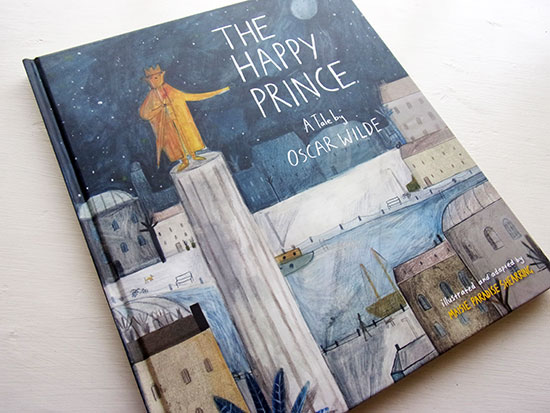The Happy Prince: A Tale by Oscar Wilde – Book Review
Illustrated and Adapted by Maisie Paradise Shearring
Published by Thames & Hudson ISBN: 978-0-500-65111-7
Reviewed by Karl Andy Foster
On the cover of this hardcover book is the Prince of the title. He stands atop a column overlooking his city. His left arm stretches outwards to lead the eye to the book title. This new version of the popular story has been given several visual twists. Chiefly the Swallow is anthropomorphised to help us to feel his emotions more deeply. There is a kind of magic realism within the images as we are transported through time and space, and across a cold and unfeeling city.
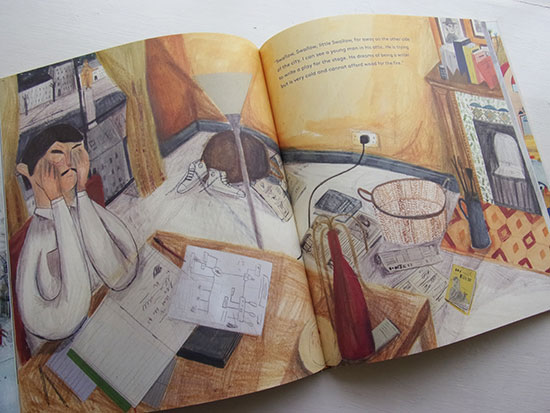
The tale is adapted from a short story by Oscar Wilde. Shearring’s text is spare and moves the story along efficiently, whereas in Wilde’s original text he gives greater dimension to the psychology of the Prince and the Swallow. Wilde emphasises the love story, while this book condenses the narrative down to the essential motivations of the two protagonists.
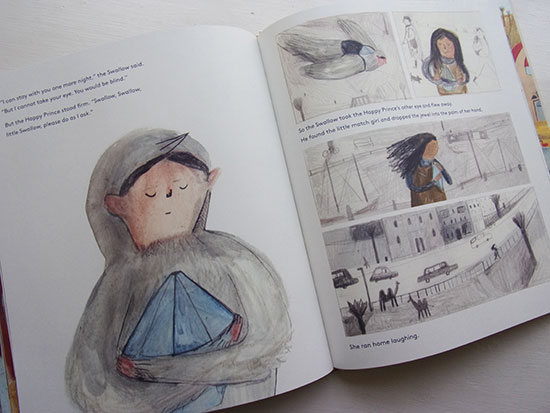
This award winning picture book is illustrated from the point of view of the Swallow and the Prince. They are up on high and see the objective truths that the people on the ground are too ‘blind’ to see. Even after the Prince has his sapphire eyes removed by the Swallow, in an act of kindness, his vision remains clear.
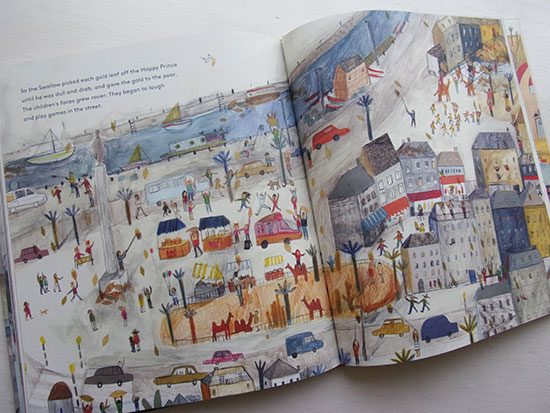
The book is printed on uncoated paper so the inks appear subtler allowing a good sense of space and place. Shearring’s illustrations are very stylised and use a palette not often employed in picture books, broad strokes and fields of grey or brown. The drawing is bold, direct and some of the mark making naïve in character. Her work is reminiscent of the trend for bold and confident illustrations in publishing. It brings to mind output by Laura Carlin, William Goldsmith and the NoBrow Press.
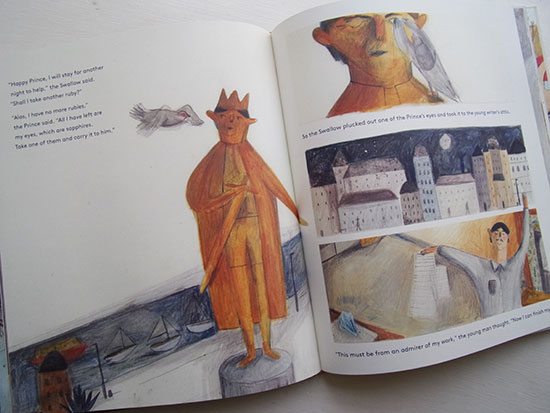
It’s a beautiful story and the illustrations draw us into the benighted world seen through the eyes of the Prince and his companion. They are locked in a struggle that brings them closer together as they discover they are prepared to die for each other. The final transformation image as they arrive in paradise is a nod to an inclusivity that Wilde could only dream of.
You may be interested in these reviews:
Back to News Page

